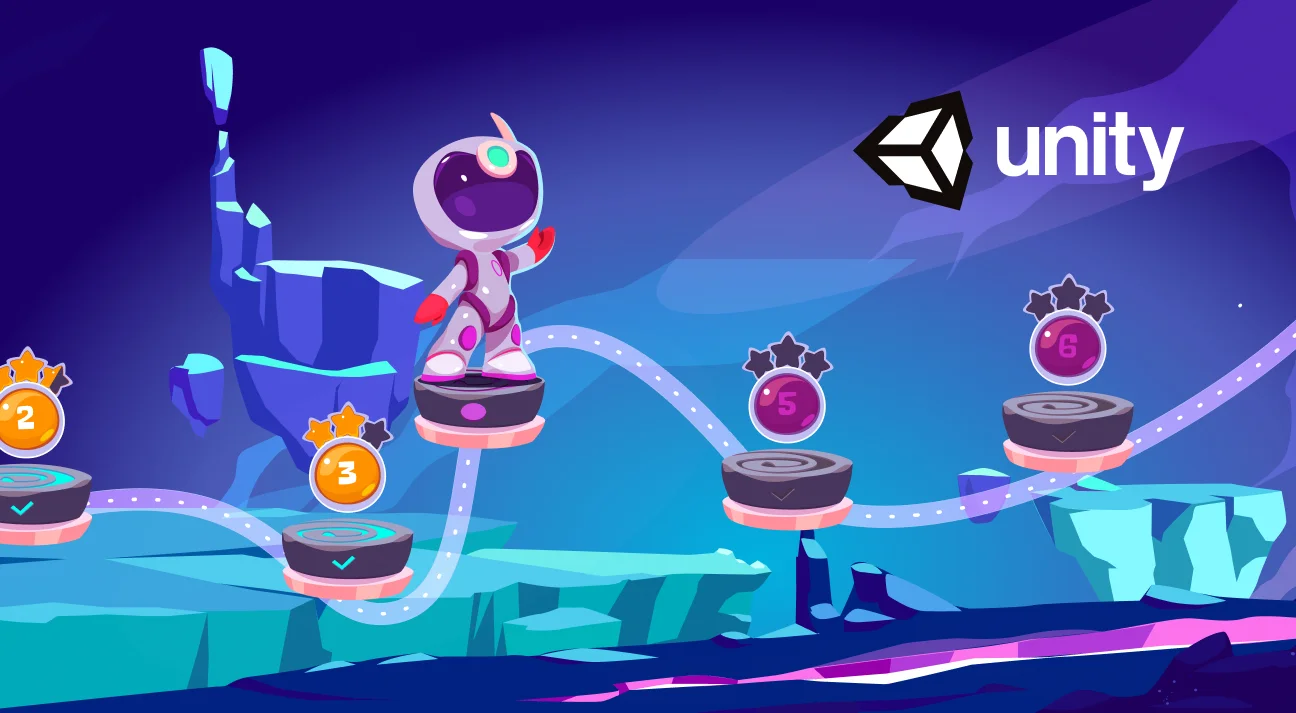
The Ultimate Guide to Develop Hyper Casual Games
In recent times, one thing in common that most of us have experienced is the ads of games when using apps, whether it is makeover games, road rolling balls, or more. A major similarity among these days is the game type – hyper casual games. These ads are a testament that game development companies seek revenue generation opportunities in this game type/genre.
This hype or rather a shift of game choice in this industry can be lucrative for game development businesses in terms of growing user base, strong brand presence, and more along with boosting their financial success.
But with the hype comes the oversaturation of the market. This does not mean that businesses can’t survive such tough competition. To begin with, the key is to find the right game mechanics and gameplay that resonates with the audience to capture their attention among many hyper-casual games.
Furthermore, to make you understand some of the key facets of this segment of the gaming industry, we have curated this blog to make some crucial information handy.
But before that, let us first have a look at what these games are and some of the games topping the charts not only in terms of engagement but also revenue.
What are Hyper Casual Games?
Known for their simplicity, hyper-casual games are lightweight and have simple mechanics(tap and play) with short-session gameplay, and social sharing features.
Some of the best hyper-casual games that even you might be familiar with without realizing that they belong to the hyper-casual games genre are Subway Surfer, Flappy Bird, Helix Jump, Going Balls, Fill the Fridge, and more.
Top Grossing Hyper-Casual Games
With game downloads hitting the 3.8 million mark in 2023, according to a report by Appmagic, here is a list of smash-hit hyper-causal games and their respective number of downloads:
- Helix Jump: 800+ million
- Magic Tiles 3: 500+ million
- Bridge Race: 250+ million
- Going Balls: 200+ million
- Race Master 3D: 135+ million
- Merge Master: 105+ million
- Count Masters: 100+ million
- Race Master 3D: 100+ million
These numbers signify more than just downloads; they represent the undeniable impact these hyper-casual games have had on the gaming industry, shaping the preferences of mobile gamers globally.
However, in terms of development, unlike other mobile games which are cost and time extensive, hyper-casual games have a quicker time to market. One of the major dilemmas that game development companies often face is how these games are different from casual games.
To get clarity, let us explore the comparison of hyper-casual with casual games.
Hyper-Casual Vs Casual Games: What’s the Difference?
Often development companies and entrepreneurs mistake hyper-casual games for casual games, and given the thin line of difference, no one is to blame for it. However, when seeking business opportunities out of these two game types, it becomes easier when you have a clear idea of which one would benefit you in terms of the number of downloads or revenue.
Before getting into the comparison aspects, let us first understand what causal games are.
These games are characterized by simple rules, easy-to-learn mechanics, and often short play sessions. Casual games are typically accessible and do not require a significant time commitment or a steep learning curve. They may cover a wide range of genres, including puzzles, simulations, card games, and more.
Although it sounds similar to hyper-casual games, here is what the game entertainers need to know about these mobile game genres.
| Parameters | Hyper Casual Games | Casual Games |
| Market Size | US$24.7 bn by 2027 | US$19.12bn by 2027 |
| Platforms | Mobile devices | Mobile devices |
| Top Game mechanics | Dexterity mechanics, Turning mechanics, Timing mechanics, Clash mechanics, Resizing | Stacking mechanics, Puzzle mechanics, Merging mechanics, Swerve mechanics, Idle mechanics |
| Target Audience | Diverse audience – appealing to individuals of all ages and genders | Diverse audience – spanning a broad range of ages and genders |
| Game size | Lower than casual games | Higher than hyper-casual games |
| Graphics Quality | Minimalist and attractive design | Cartoony or stylized graphics |
| Retention Rates | 6 to 10% | 5 to 10% |
| Downloads(till 2023) | 3.5 billion | 4.15 billion |
| Revenue & Monitanization | In-app ads and in-app purchases | In-app ads and in-app purchases |
Types of Hyper Casual Games
From endless runners like Subway Surfer to puzzle games like 2048, hyper-casual games span various categories but share the common thread of easy-to-understand game mechanics. These mechanics are game rules that guide and govern the player’s in-game actions. For instance, an endless runner game in unreal engine can showcase smooth movement, dynamic obstacles, and intuitive swipe-based controls, all built upon simple yet addictive mechanics that define the hyper-casual genre.
Here are some of the most profitable hyper-casual game mechanics.
Swerve Mechanics
In this game mechanics, the player has to drag their finger horizontally or vertically across the screen to avoid the in-game obstacles on the track. The dynamic and responsive gaming experience makes these games highly engaging. Aquapark, Temple Run, and Subway Surfer are some of the most popular hyper-casual games with swearing-swerving gameplay mechanics.
Stacking Mechanics
Players have to stack the moving in-game items on top of each other in this game mechanics. Stacking games offer a mix of strategy and precision, putting players’ balancing skills to the test, and contributing to prolonged player engagement. The best demonstration of these gameplay mechanics can be seen in the games Cat Stack, The Tower, Stacky Dash, and more.
Timing Mechanics
Tapping the screen on precise timings demanding focus and coordination for accurate outcomes is what the timing mechanics are all about in hyper-causal games. These mechanics add an element of skill and strategy, creating an immersive and satisfying gameplay experience.
Games like Baseball Boy!, Fun Race 3D, and more are some of the best examples of hyper-casual games with timing mechanics.
Puzzle Mechanics
It requires players to solve simple yet engaging puzzles with lesser complexity. These games offer mental stimulation and sustained player interest due to the simplicity of the puzzles ensures accessibility while providing a rewarding experience. Some of the hyper-casual games with puzzle mechanics are Roller Splat!, 1010!, 2048, and more.
Agility or Dexterity Mechanics
This game mechanics is a combination of agility and Dexterity mechanics. Agility mechanics is all about swift and responsive in-game movements. On the other hand, Dexterity mechanics is derived from the word “mechanical dexterity” which means controlling an object skillfully and quickly with hands.
The balance of reflexes and hand-eye coordination enables the players to win the game. Tiles Hop: EDM Rush! showcases the best agility or dexterity mechanics.
Merge Mechanics
Being one of the most satisfying game mechanics, it involves players combining similar items to upgrade and unlock higher-tier elements. The mechanic’s satisfaction lies in the strategic decisions players make to optimize merging.
Further, the sense of growth and accomplishment makes these games appealing for extended play sessions. The hyper-casual games with merge mechanics are Merge Town, Merge Villa, and more.
Resizing Mechanics
The games with resizing mechanics involve players’ progress in the game by resizing the in-game player avatars (shrink or grow) to fit in the gaps of the hurdles placed on the track. Games like Jelly Shift, High Heel!, and more are hyper-casual games with resizing mechanics.

How To Make Hyper Casual Games
Upon selecting the game mechanic for developing the hyper-causal game, the next step is to have a roadmap that allows the team to stay on the same page along with achieving every aspect of game development in a more strategic manner.
Here is how designers and developers can create hyper-casual games:
Choose The Right Game Engine
Selecting the appropriate game engine is a crucial step in creating hyper-casual games. Game engines are the foundation for game development, providing the tools and environment needed to bring your ideas to life.
When choosing game engines for hyper-casual game development, consider factors such as user-friendly interfaces, extensive community support, and compatibility with your target platforms.
For example, if you are opting for mobile game development for your hyper-casual game concept, Unity and Unreal Engine are both good choices as they offer beginner-friendly interfaces, making it easier to design and develop hyper-casual mobile games without extensive coding knowledge.
Acquire Game Assets
The next crucial aspect of the selection of game assets is combining elements like characters, backgrounds, animations, and sound effects, giving life to your game concept.
To ensure a captivating gaming experience, it’s essential to select assets that align with the casual and engaging nature of hyper-casual games. Look for visually appealing graphics, simple yet vibrant characters, and catchy sound effects that resonate with your target audience.
Prioritize Gameplay
The heart of any game lies in the player experience/engagement, and in hyper-casual games, simplicity is the name of the game. For providing player engagement in hyper-casual games – every tap or swipe counts.
Prioritizing gameplay involves crafting mechanics that are easy to grasp yet engaging enough to keep players hooked. Ensure that the controls are intuitive, levels are progressively challenging, and the overall gaming experience is seamless.
Develop A Prototype
Having a prototype allows you to test your ideas quickly and identify what works best. It is a tangible representation of your game idea, helping you visualize and refine its key elements before moving on to full-scale development.
Prioritize Visuals
In hyper-casual games simplicity is key, and visuals play a crucial role in capturing the player’s attention instantly. Choosing vibrant colors, clean designs, and straightforward graphics to resonate with your target audience and make the in-game aspects easily comprehensible.
Implement Effective Ad Placements
Strategically positioning ads within your game can enhance user experience and increase revenue. Consider integrating ads between levels, during natural breaks, or as optional boosts. The key is to strike a balance – providing value to players without disrupting their gaming flow.
Choose non-intrusive formats like rewarded ads, offering players in-game benefits in exchange for watching. Additionally, keep track of user engagement and adjust ad placements based on player behavior.
Optimize For Performance
Whether it’s streamlining graphics, minimizing load times, or optimizing code, a performance-focused approach ensures that your hyper-casual game stands out. Begin with fine-tuning the game’s elements to ensure it operates seamlessly across various devices, from smartphones to tablets.
Further, you can improve the player’s experience by streamlining graphics, minimizing unnecessary features, and enhancing coding efficiency.
Soft Launch And Testing
It is essential to test the game’s performance, identify potential issues, and gather user feedback before making it available to your target audience. Upon releasing the game to a limited audience, the developers can get constructive user reactions on engagement metrics and any technical glitches to make necessary adjustments for improving the overall gameplay.
How 300Mind Stands Out in Hyper-Casual Game Development?
As one of the leading game development studios, we take pride in offering exceptional services to bring your gaming ideas to life. With a passion for crafting engaging and addictive hyper-casual games, 300Mind combines creativity, innovation, and technical expertise to make some of the most engaging games regardless of the genre.
We offer comprehensive game development services, allowing clients the flexibility to either outsource entire projects to our skilled team or hire our experienced designers and developers. Our dedicated team of expert designers and developers is equipped with the skills and creativity to transform your concepts into engaging hyper-casual games that captivate audiences worldwide.
Whether you’re looking to outsource your entire project or hire our expert designers and developers, we’ve got you covered.








